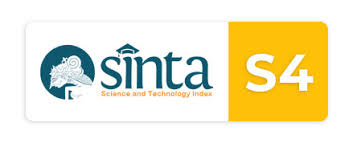Studi Microbial Enhanced Oil Recovery Skala Laboratorium Dan Penerapannya Di Lapangan Minyak
DOI:
https://doi.org/10.29017/LPMGB.50.1.730Kata Kunci:
mikroba, nutrisi, bioproduk, MEOR, peningkatan perolehan minyakAbstrak
Microbial Enhanced Oil Recovery (MEOR), merupakan teknologi yang dapat meningkatkan perolehan minyak dengan memanfaatkan aktivitas mikroba. Kegiatan penelitian MEOR dimulai dari isolasi dan identifi kasi mikroba; uji tabung guna menentukan mikroba dan nutrisi yang cocok untuk reservoir tertentu; uji Microbial Core Flooding/MCF dan uji coba MEOR di lapangan. Melalui uji tabung dan MCF, telah diperoleh mikroba dan nutrisi potensial yaitu kultur campuran dari sumur LDK 230 dengan starter KKL 11 dan medium M4 plus. Namun untuk uji coba lapangan berbagai faktor seperti kesesuaian antara karakteristik reservoir, kinerja mikroba dalam menghasilkan bioproduk, dan kondisi operasi masih perlu dipertimbangkan untuk keberhasilan teknologi MEOR, sehingga dapat diimplementasikan untuk peningkatkan perolehan minyak.Referensi
Al-Bahry, S. N., Al-Wahaibi, Y., Al-Bahry, S.,
Elshafie, A., 2013. “Biosurfactant production
by Bacillus subtilis B20 using date molasses
and its possible application in enhanced oil
recovery,†International Biodeterioration and
Biodegradation, vol. 81, pp. 141–146.
Al-Sulaimani, H., Al-Wahaibi, Y., Al-Bahry, S.,
Elshafi e, A., Al-Bermani, A., 2011. “Microbial
biotechnology for enhancing oil recovery: Current
developments and future prospectsâ€, Biotechnol.
Bioinf. Bioeng, 1 (2), 147 – 158.
Bryant, S. L. and Lockhart, T. P., 2002. “Reservoir
engineering analysis of microbial enhanced oil
recoveryâ€, SPE-63229 presented at ATCE, Dallas,
Texas, USA.
Coskuner, G., 2014. “Microbial Enhanced Oil
Recovery Process for Heavy Oil Accumulationsâ€,
Published patent application US 8746334 B2.
Dahle, H, & Birkeland, N. K. 2006. “Thermovirga
lienii gen. nov., sp. nov., a novel moderately
thermophilic, anaerobic, amino-acid-degrading
bacterium isolated from a North Sea oil wellâ€, Int.
J. Syst. Evol. Microbiol., 56, 1539-1545.
Fullazzaky, M., and Astuti, D. I., 2015. “Laboratory
simulation of microbial enhanced oil recovery
using Geobacillus toebii R-32639 isolated from the
Handil reservoirâ€, RSC Adv., 5, 3908-3916
Grabowski, A, Nercessian, O, Fayolle, F, Blanchet,
D, & Jeanthon, C. 2005. “Microbial diversity
in production waters of a low-temperature
biodegraded oil reservoirâ€, FEMS microbiology
ecology, 54(3), 427-43.
Gray, M.R., Yeung, A., Foght, J.M., & Yarranton,
H.W., 2008. “Potential Microbial Enhanced Oil
Recovery Processes: A Critical Analysisâ€. In: SPE
at the 2008 Annual Technical Conference
and Exhibition held in Denver, Colorado, USA.
Jackson, S. C., Fisher, J., Albert, A. W., and
Davidson, M., 2013, “Inoculation Key To MEOR
Techniqueâ€, The American Oil and Gas Reporter.
Kadarwati, S., Kussuryani, Y., Sugihardjo, 2004.
“Penerapan Bioteknologi untuk Peningkatan
Perolehan Minyak (MEOR) yang Murah dan
Ramah Lingkunganâ€, Lembaran Publikasi Ilmiah,
Pusat Pendidikan dan Pelatihan Minyak dan Gas
Bumi, Vol. 11, No. 2, hal. 75-81.
Kadarwati, S., 2008a. “Seleksi Bakteri Penghasil
Biosurfaktan dari Reservoir Minyakâ€, Lembaran
Publikasi LEMIGAS, Vol. 42, No. 2, hal. 1-9.
Kadarwati, S., 2008b. “Karakterisasi Biosurfaktan
yang dihasilkan Bakteri Providensia Rettgeri
dan Bacillus subtilis dari reservoir Indonesiaâ€,
Lembaran Publikasi LEMIGAS, Vol. 42, No. 3,
hal. 18-25.
Kussuryani, Y., 2003. “Uji Media untuk MEOR
Suhu Rendahâ€, Lembaran Publikasi Ilmiah, Pusat
Pendidikan dan Pelatihan Minyak dan Gas Bumi,
Vol. 10, No. 2, hal. 44-50.
Larter, S. R., Gates, I. D., Adams, J. J., 2008.
“Preconditioning an Oilfi eld Reservoir, Published
patent application CA 2672487 A1.
LEMIGAS, 2006. Laporan Penelitian Studi Mencari
Nutrisi Potensial untuk MEOR, R 0063 C5/BLM
PB, hal. 19-31.
LEMIGAS, 2014. Laporan Kegiatan LEMIGAS 2014,
Badan Litbang ESDM, Kementerian ESDM.
Marshall, S. L., 2008. “Fundamental Aspect of
Microbial Enhanced Oil Recovery: A Literature
Surveyâ€, CSIRO, Land and Water, Floreat, Western
Australia, pp. 1-42.
Nmegbu C.G.J., and Pepple D.D., 2014. “Modeling
a Well Stimulation Process Using The MEOR
Techniqueâ€, International Journal of Research in
Engineering and Technology, Vol. 03, Issue: 03,
pp. 153-159.
Nielsen, S.M., Shapiro, A.A., Michelsen, M.L.,
& Stenby, E.H. (2010). “1D Simulations for
Microbial Enhanced Oil Recovery with Metabolite
Partitioningâ€, Transp. Porous Med., Vol. 85, pp.
(785–802).
Sari, C. N., dan Kussuryani, Y., 2013. “Seleksi
Mikroba dan Nutrisi yang Berpotensi Menghasilkan
Biosurfaktan untuk MEORâ€, Lembaran Publikasi
Minyak dan Gas Bumi, Vol. 47, No. 2, hal. 59-67.
Shibula, B., Al-Bachry, S. N., Al-Wahaibi, Y. M.,
Abdulkader, E., Elshafie, Al-Bemani, A. S.,
and Joshi, S. J., 2014. “Microbial Enchanced
Heavy Oil Recovery by the Aid of Inhabitant
Spore-Forming Bacteria: An Insight Reviewâ€,
The Scientifi c World Journal, Article ID 309159,
pages, http://dx.doi.org/10.1155/2014/309159
Suthar, Harish, Krushi Hingurao, Anjana Desai, and
Anuradha Nerurkar, 2009. “Selective Plugging
Strategy Based Microbial Enhanced Oil Recovery
Using Bacillus licheniformis TT33 “, J. Microbiol.
Biotechnol, 19(10), 1230–1237 doi: 10.4014/
jmb.0904.04043.
Thrasher, D., 2010. “MEOR from Lab to Fieldâ€,
SPE12971, pp. 1-9.
Usman, 2011. “Potensi Pengembangan EOR untuk
Peningkatan Produksi Minyak Indonesiaâ€,
Lembaran Publikasi LEMIGAS, Vol. 45, No. 2,
hal. 91-101.
Yuan, J. Y., JIANG, Q., THORNTON, B., QIN, K.,
Watson, J. D., 2014. “Method for Treating
Carbonate Reservoirs†Published patent
application WO 2014053912 A1.











